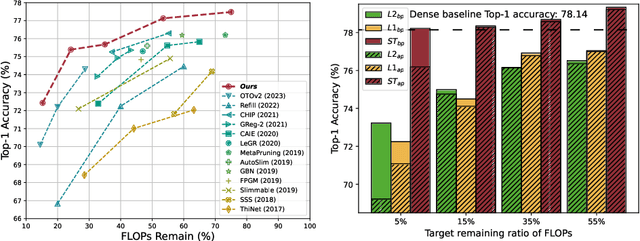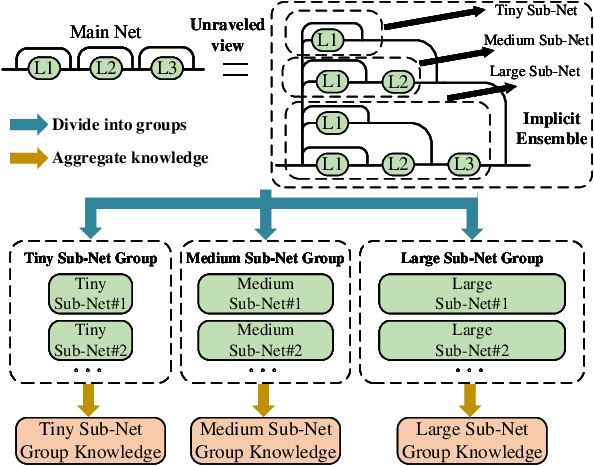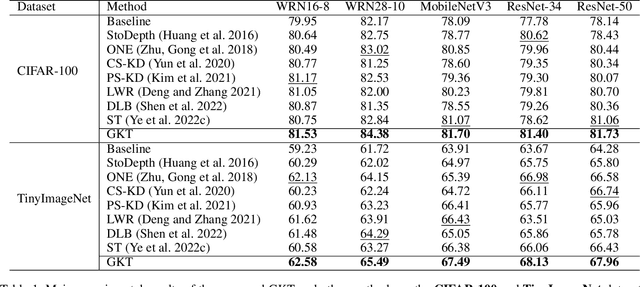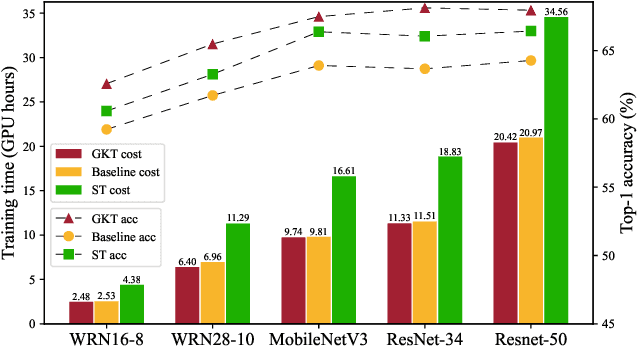Shengji Tang
Wisdom of the Crowd: Reinforcement Learning from Coevolutionary Collective Feedback
Aug 17, 2025Abstract:Reinforcement learning (RL) has significantly enhanced the reasoning capabilities of large language models (LLMs), but its reliance on expensive human-labeled data or complex reward models severely limits scalability. While existing self-feedback methods aim to address this problem, they are constrained by the capabilities of a single model, which can lead to overconfidence in incorrect answers, reward hacking, and even training collapse. To this end, we propose Reinforcement Learning from Coevolutionary Collective Feedback (RLCCF), a novel RL framework that enables multi-model collaborative evolution without external supervision. Specifically, RLCCF optimizes the ability of a model collective by maximizing its Collective Consistency (CC), which jointly trains a diverse ensemble of LLMs and provides reward signals by voting on collective outputs. Moreover, each model's vote is weighted by its Self-Consistency (SC) score, ensuring that more confident models contribute more to the collective decision. Benefiting from the diverse output distributions and complementary abilities of multiple LLMs, RLCCF enables the model collective to continuously enhance its reasoning ability through coevolution. Experiments on four mainstream open-source LLMs across four mathematical reasoning benchmarks demonstrate that our framework yields significant performance gains, achieving an average relative improvement of 16.72\% in accuracy. Notably, RLCCF not only improves the performance of individual models but also enhances the group's majority-voting accuracy by 4.51\%, demonstrating its ability to extend the collective capability boundary of the model collective.
S2HPruner: Soft-to-Hard Distillation Bridges the Discretization Gap in Pruning
Oct 09, 2024Abstract:Recently, differentiable mask pruning methods optimize the continuous relaxation architecture (soft network) as the proxy of the pruned discrete network (hard network) for superior sub-architecture search. However, due to the agnostic impact of the discretization process, the hard network struggles with the equivalent representational capacity as the soft network, namely discretization gap, which severely spoils the pruning performance. In this paper, we first investigate the discretization gap and propose a novel structural differentiable mask pruning framework named S2HPruner to bridge the discretization gap in a one-stage manner. In the training procedure, SH2Pruner forwards both the soft network and its corresponding hard network, then distills the hard network under the supervision of the soft network. To optimize the mask and prevent performance degradation, we propose a decoupled bidirectional knowledge distillation. It blocks the weight updating from the hard to the soft network while maintaining the gradient corresponding to the mask. Compared with existing pruning arts, S2HPruner achieves surpassing pruning performance without fine-tuning on comprehensive benchmarks, including CIFAR-100, Tiny ImageNet, and ImageNet with a variety of network architectures. Besides, investigation and analysis experiments explain the effectiveness of S2HPruner. Codes will be released soon.
HiSplat: Hierarchical 3D Gaussian Splatting for Generalizable Sparse-View Reconstruction
Oct 08, 2024



Abstract:Reconstructing 3D scenes from multiple viewpoints is a fundamental task in stereo vision. Recently, advances in generalizable 3D Gaussian Splatting have enabled high-quality novel view synthesis for unseen scenes from sparse input views by feed-forward predicting per-pixel Gaussian parameters without extra optimization. However, existing methods typically generate single-scale 3D Gaussians, which lack representation of both large-scale structure and texture details, resulting in mislocation and artefacts. In this paper, we propose a novel framework, HiSplat, which introduces a hierarchical manner in generalizable 3D Gaussian Splatting to construct hierarchical 3D Gaussians via a coarse-to-fine strategy. Specifically, HiSplat generates large coarse-grained Gaussians to capture large-scale structures, followed by fine-grained Gaussians to enhance delicate texture details. To promote inter-scale interactions, we propose an Error Aware Module for Gaussian compensation and a Modulating Fusion Module for Gaussian repair. Our method achieves joint optimization of hierarchical representations, allowing for novel view synthesis using only two-view reference images. Comprehensive experiments on various datasets demonstrate that HiSplat significantly enhances reconstruction quality and cross-dataset generalization compared to prior single-scale methods. The corresponding ablation study and analysis of different-scale 3D Gaussians reveal the mechanism behind the effectiveness. Project website: https://open3dvlab.github.io/HiSplat/
Enhanced Sparsification via Stimulative Training
Mar 11, 2024



Abstract:Sparsification-based pruning has been an important category in model compression. Existing methods commonly set sparsity-inducing penalty terms to suppress the importance of dropped weights, which is regarded as the suppressed sparsification paradigm. However, this paradigm inactivates the dropped parts of networks causing capacity damage before pruning, thereby leading to performance degradation. To alleviate this issue, we first study and reveal the relative sparsity effect in emerging stimulative training and then propose a structured pruning framework, named STP, based on an enhanced sparsification paradigm which maintains the magnitude of dropped weights and enhances the expressivity of kept weights by self-distillation. Besides, to find an optimal architecture for the pruned network, we propose a multi-dimension architecture space and a knowledge distillation-guided exploration strategy. To reduce the huge capacity gap of distillation, we propose a subnet mutating expansion technique. Extensive experiments on various benchmarks indicate the effectiveness of STP. Specifically, without fine-tuning, our method consistently achieves superior performance at different budgets, especially under extremely aggressive pruning scenarios, e.g., remaining 95.11% Top-1 accuracy (72.43% in 76.15%) while reducing 85% FLOPs for ResNet-50 on ImageNet. Codes will be released soon.
Boosting Residual Networks with Group Knowledge
Aug 26, 2023



Abstract:Recent research understands the residual networks from a new perspective of the implicit ensemble model. From this view, previous methods such as stochastic depth and stimulative training have further improved the performance of the residual network by sampling and training of its subnets. However, they both use the same supervision for all subnets of different capacities and neglect the valuable knowledge generated by subnets during training. In this manuscript, we mitigate the significant knowledge distillation gap caused by using the same kind of supervision and advocate leveraging the subnets to provide diverse knowledge. Based on this motivation, we propose a group knowledge based training framework for boosting the performance of residual networks. Specifically, we implicitly divide all subnets into hierarchical groups by subnet-in-subnet sampling, aggregate the knowledge of different subnets in each group during training, and exploit upper-level group knowledge to supervise lower-level subnet groups. Meanwhile, We also develop a subnet sampling strategy that naturally samples larger subnets, which are found to be more helpful than smaller subnets in boosting performance for hierarchical groups. Compared with typical subnet training and other methods, our method achieves the best efficiency and performance trade-offs on multiple datasets and network structures. The code will be released soon.
Stimulative Training++: Go Beyond The Performance Limits of Residual Networks
May 04, 2023



Abstract:Residual networks have shown great success and become indispensable in recent deep neural network models. In this work, we aim to re-investigate the training process of residual networks from a novel social psychology perspective of loafing, and further propose a new training scheme as well as three improved strategies for boosting residual networks beyond their performance limits. Previous research has suggested that residual networks can be considered as ensembles of shallow networks, which implies that the final performance of a residual network is influenced by a group of subnetworks. We identify a previously overlooked problem that is analogous to social loafing, where subnetworks within a residual network are prone to exert less effort when working as part of a group compared to working alone. We define this problem as \textit{network loafing}. Similar to the decreased individual productivity and overall performance as demonstrated in society, network loafing inevitably causes sub-par performance. Inspired by solutions from social psychology, we first propose a novel training scheme called stimulative training, which randomly samples a residual subnetwork and calculates the KL divergence loss between the sampled subnetwork and the given residual network for extra supervision. In order to unleash the potential of stimulative training, we further propose three simple-yet-effective strategies, including a novel KL- loss that only aligns the network logits direction, random smaller inputs for subnetworks, and inter-stage sampling rules. Comprehensive experiments and analysis verify the effectiveness of stimulative training as well as its three improved strategies.
Stimulative Training of Residual Networks: A Social Psychology Perspective of Loafing
Oct 09, 2022



Abstract:Residual networks have shown great success and become indispensable in today's deep models. In this work, we aim to re-investigate the training process of residual networks from a novel social psychology perspective of loafing, and further propose a new training strategy to strengthen the performance of residual networks. As residual networks can be viewed as ensembles of relatively shallow networks (i.e., \textit{unraveled view}) in prior works, we also start from such view and consider that the final performance of a residual network is co-determined by a group of sub-networks. Inspired by the social loafing problem of social psychology, we find that residual networks invariably suffer from similar problem, where sub-networks in a residual network are prone to exert less effort when working as part of the group compared to working alone. We define this previously overlooked problem as \textit{network loafing}. As social loafing will ultimately cause the low individual productivity and the reduced overall performance, network loafing will also hinder the performance of a given residual network and its sub-networks. Referring to the solutions of social psychology, we propose \textit{stimulative training}, which randomly samples a residual sub-network and calculates the KL-divergence loss between the sampled sub-network and the given residual network, to act as extra supervision for sub-networks and make the overall goal consistent. Comprehensive empirical results and theoretical analyses verify that stimulative training can well handle the loafing problem, and improve the performance of a residual network by improving the performance of its sub-networks. The code is available at https://github.com/Sunshine-Ye/NIPS22-ST .
 Add to Chrome
Add to Chrome Add to Firefox
Add to Firefox Add to Edge
Add to Edge